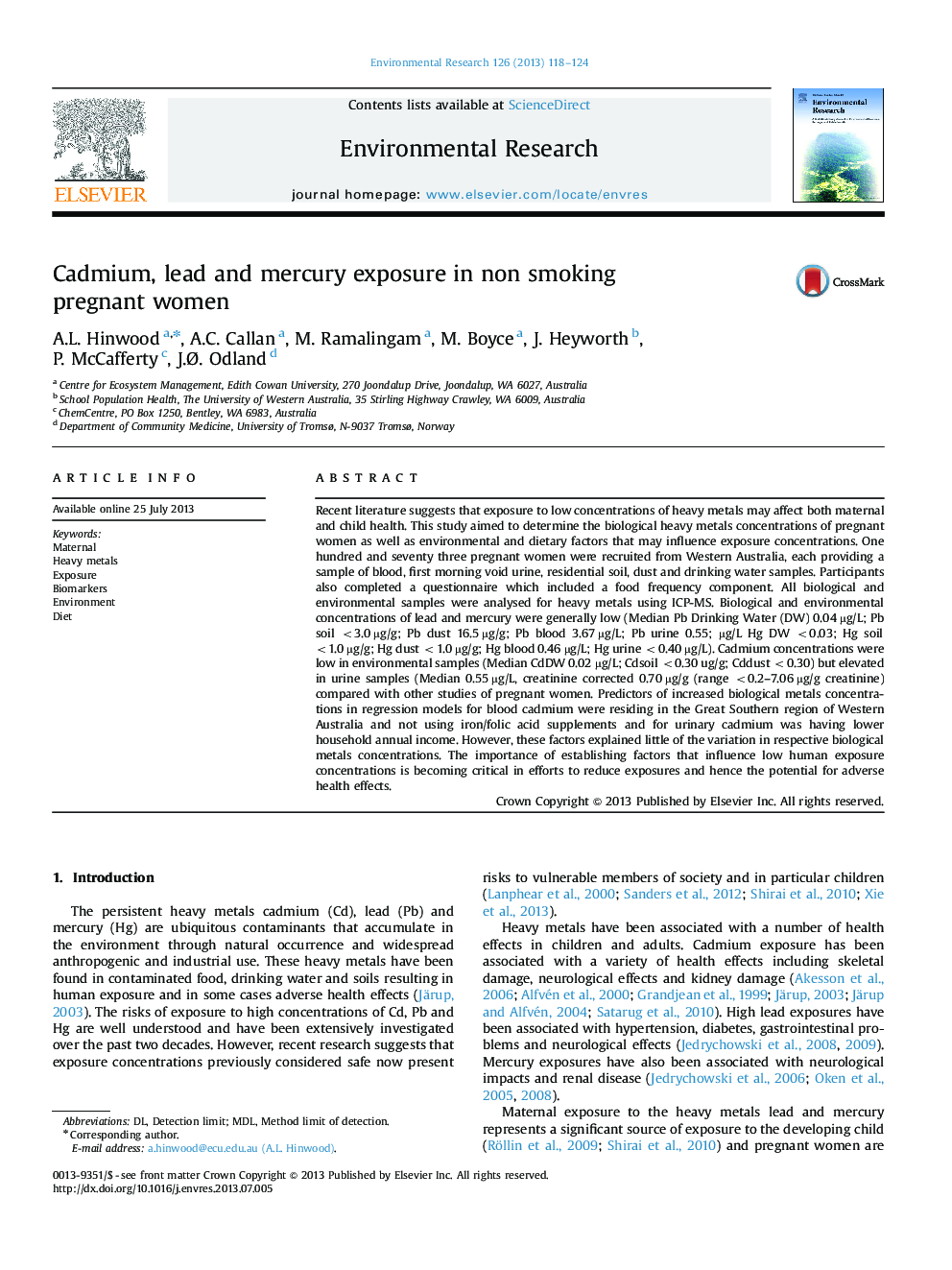| Article ID | Journal | Published Year | Pages | File Type |
|---|---|---|---|---|
| 6353127 | Environmental Research | 2013 | 7 Pages |
Abstract
Recent literature suggests that exposure to low concentrations of heavy metals may affect both maternal and child health. This study aimed to determine the biological heavy metals concentrations of pregnant women as well as environmental and dietary factors that may influence exposure concentrations. One hundred and seventy three pregnant women were recruited from Western Australia, each providing a sample of blood, first morning void urine, residential soil, dust and drinking water samples. Participants also completed a questionnaire which included a food frequency component. All biological and environmental samples were analysed for heavy metals using ICP-MS. Biological and environmental concentrations of lead and mercury were generally low (Median Pb Drinking Water (DW) 0.04 µg/L; Pb soil <3.0 µg/g; Pb dust 16.5 µg/g; Pb blood 3.67 µg/L; Pb urine 0.55; µg/L Hg DW <0.03; Hg soil <1.0 µg/g; Hg dust <1.0 µg/g; Hg blood 0.46 µg/L; Hg urine <0.40 µg/L). Cadmium concentrations were low in environmental samples (Median CdDW 0.02 µg/L; Cdsoil <0.30 ug/g; Cddust <0.30) but elevated in urine samples (Median 0.55 µg/L, creatinine corrected 0.70 µg/g (range <0.2-7.06 µg/g creatinine) compared with other studies of pregnant women. Predictors of increased biological metals concentrations in regression models for blood cadmium were residing in the Great Southern region of Western Australia and not using iron/folic acid supplements and for urinary cadmium was having lower household annual income. However, these factors explained little of the variation in respective biological metals concentrations. The importance of establishing factors that influence low human exposure concentrations is becoming critical in efforts to reduce exposures and hence the potential for adverse health effects.
Related Topics
Life Sciences
Environmental Science
Health, Toxicology and Mutagenesis
Authors
A.L. Hinwood, A.C. Callan, M. Ramalingam, M. Boyce, J. Heyworth, P. McCafferty, J.Ã. Odland,
